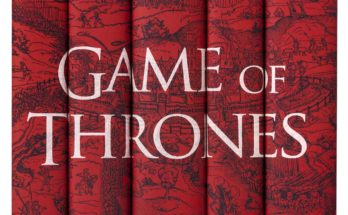I am late to HBO’s Game of Thrones. I usually hate getting into a series well after a number of seasons have already been produced and unleashed onto the viewing public. I feel like I am wearing clothes that are outdated, ugly, and unfashionable.
Yet, armed with my HBOGO subscription and some free time on my hands, I began watching the acclaimed series. It immediately sucked me into its world of intrigue, double crossing, and frightening violence. The show interweaves our understanding of a medieval world, with its lords, ladies, honor, and code, with elements of a violent horror story. Much of the show reminds of me of my studies in medieval history, with the emphasis on royal justice, competing interests from other royal families, and the lives of the peasants, who have their own version of life equally as rich as those of their social superiors.
In the visually shocking episode, titled “A Golden Crown,” the young dragon prince known as Viserys Targaryen met his end at the hand of warlord Khal Drogo and his Dothraki men. Drogo takes his golden ornaments, melts them in a cauldron, and then pours the intensely hot, molten gold over the head of Viserys Targaryen causing him to writhe and scream in unspeakable pain. As the scene unfolded, one could imagine that the annoying and would be king was going to be dispatched in dramatic fashion, but one could not have been prepared for the brutal end.
It was this scene that permanently hooked me into watching the rest of the series in order to catch up to season three. I use any free time to wrap myself up in the series based on George R.R. Martin’s written vision.
Why?
It was a similar reason why I watched the Sopranos and currently watch True Blood, also on HBO. It is not solely because I am attracted to violence, which of course, I am. Humanity is attracted to violence. Just take a look at our history, from the deadly games of the Roman Coliseum to the very public executions of medieval France, to the intricate and brutal murders of women who were accused of witchcraft in Salem Massachusetts. Not only are human beings capable of great violence, there is an element in it all that causes us to watch it with intent and elation. These shows tap into the primal sense of violence humans possess. Good or bad, the sense is there and entertainment vehicles that tap into it, carefully and not too often, entwine the viewer, as a spider would prey.
The show also has ample amounts of sex as well, no doubt another well placed ploy the snatch the viewer into the fictional world.
With all this violence and sex, is there any wonder why the series has been successful and continues to lure more viewers? Yet, I submit that while the action is great, the violence is disturbingly thrilling, and the sex scintillating, there exists a wonderful weaving storyline, with rich, complex, and even odious characters. Throw in the revolving door of characters who come and go by death, and the show continually renews itself. And before you conclude that the violence and other elements are gratuitous, I shall suggest otherwise.
In the beginning of the series, a man is sentenced to death. The lord must perform the action, and makes all his sons come to witness the act, in particular, his youngest. After the execution, the father asks his son whether he understood why the man had to be decapitated. In the act, the father demonstrated that there is law, consequence for violating it, and it was his role to see punishment meted out. In that way, the father was demonstrating a vital role of law and punishment in society.
As I continue to watch the series, I await more scenes that will tap into my own violent nature. As they do, I will continue to struggle with one of the essential truths of our existence. We are human and we enjoy violence. We may not act out on it often, but we live vicariously through our entertainment. As the Roman masses would revel at the sights and sounds of the Coliseum, we revel in our modern violent forms of entertainment. In that way, the art reflects us.



